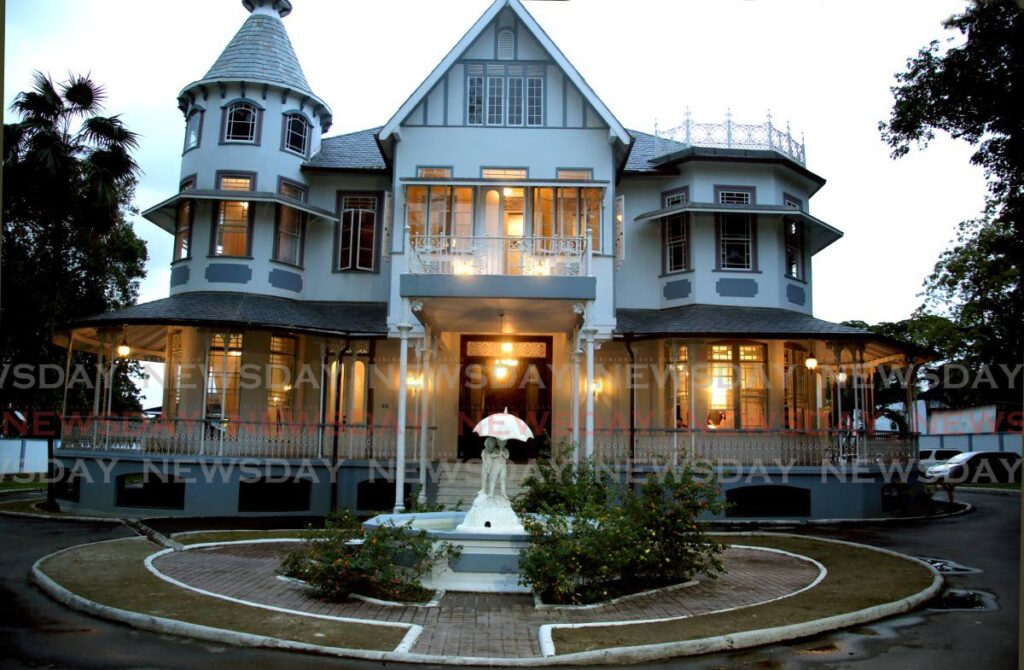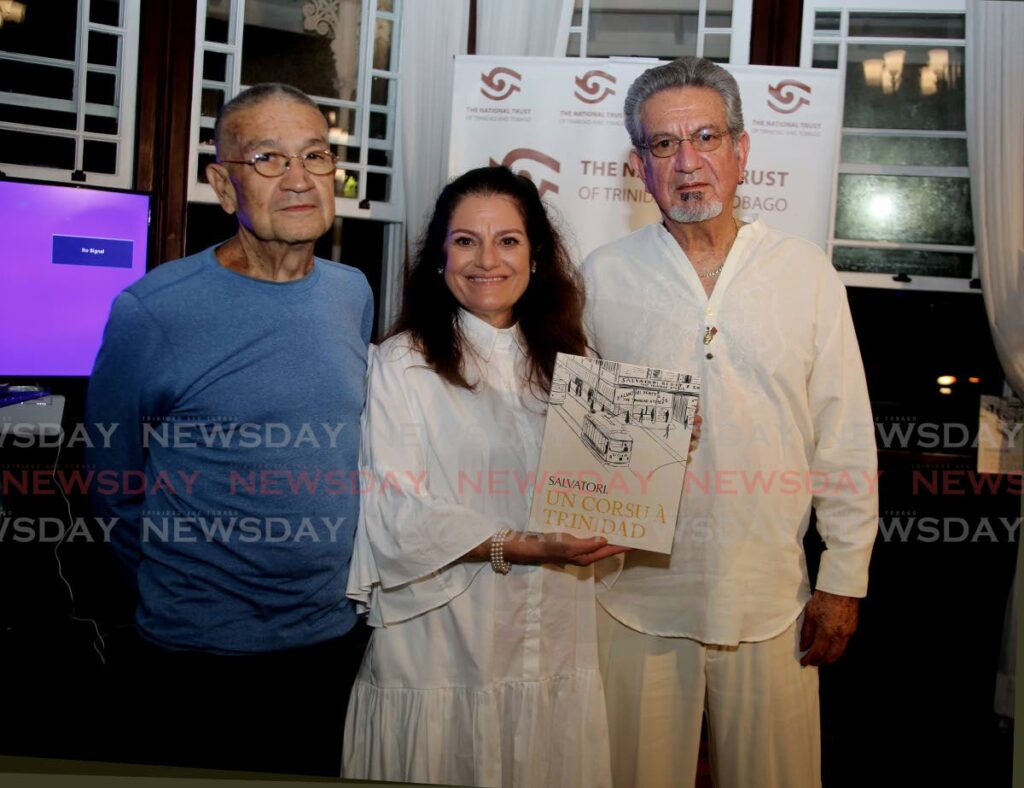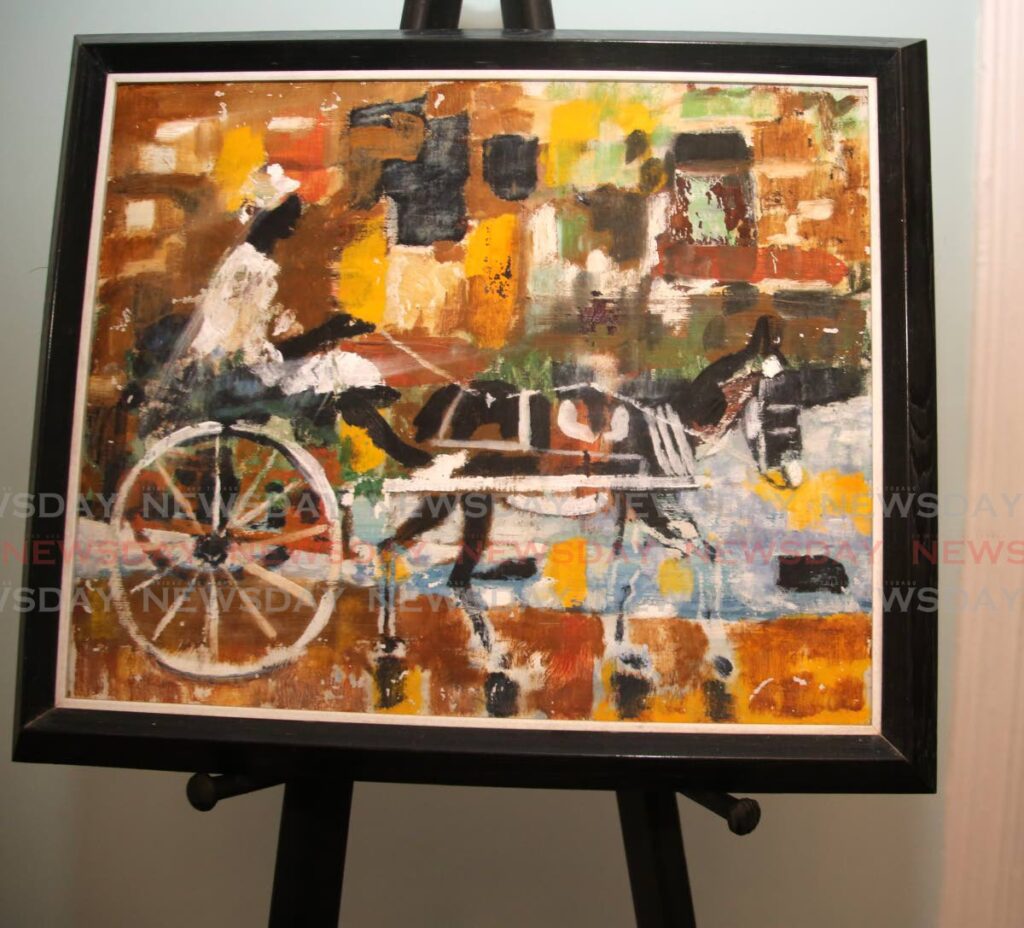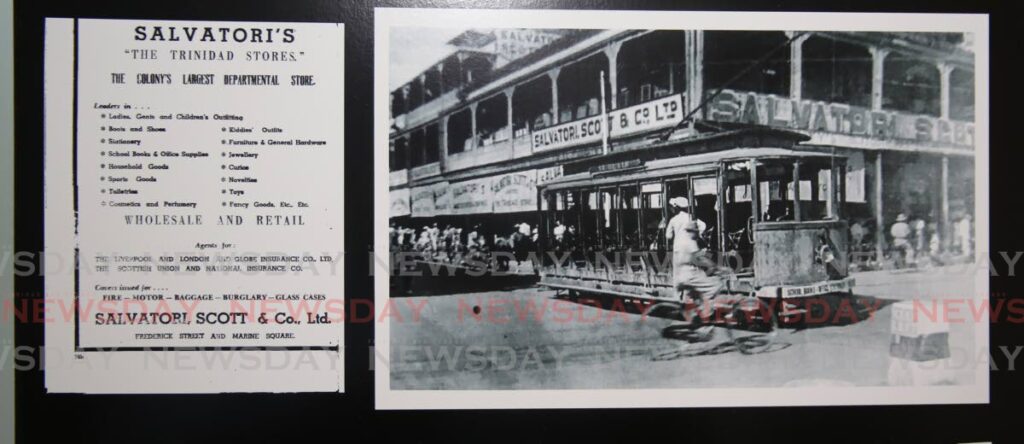Salvatori: Un Corsu A Trinidad, uplifting connection of life and history

When the researchers and writers at the publishing company Plantain tracked down the story of Joseph Salvatori, they confessed that, like most people, they associated the name Salvatori with little more than a building in the heart of Port of Spain that once bore the businessman’s name.
But Joseph Salvatori was more than a rags-to-riches story and a savvy businessman with a building named after him. He was a diplomat, an inspirational individual, a leading figure in the cocoa era in Trinidad and a complicated character worthy of a novel.
His story surfaces in a colourful biography entitled Salvatori: Un Corsu A Trinidad, commissioned by Salvatori’s great-granddaughter, Lorraine O’Connor.

The biography brings both Salvatori and the cocoa era to life through letters, personal documents, diary entries, newspaper clippings, interviews with family members and research into the history of Corsica and Trinidad. It features information gathered from archives in London, Paris, Corsica, the US and Trinidad.
Salvatori certainly had his fair share of adventures, which shaped his life.
In her introduction, O’Connor writes, “Your journey from a farmer in Corsica to one of the most powerful families in TT, leaves us, your family, a legacy of resilience, determination, and will to succeed.”
The biography is described as “a bespoke package, crafted and published by Plantain, that helps capture legacies and build bridges for future generations.”
It is a deeply personal book reflecting O’Connor’s family history, yet Salvatori’s story has a wide appeal as an immigrant story that fits into these times. He migrated twice: Venezuela served as his first home after Corsica. He lived there for ten years before moving to Trinidad, which he had visited often for business.
Born on April 28, 1880, Salvatori ventured west near the beginning of the 20th century. How he arrived in Trinidad from Venezuela is a story in itself that features love, ambition and the eventual need to escape the political turmoil of South America.
His story chronicles the rise of the cocoa industry in Trinidad. It brought Salvatori wealth, fame and Mille Fleurs, one of the Magnificent Seven buildings around the Savannah. Detailed descriptions of life at Mille Fleurs create a window into the lives of wealthy Trinidadians.
Much of the biography re-imagines Salvatori’s life from the vineyards of Corsica to the bustling city of Port of Spain at the turn of the 20th century. Readers will feel as though they experience everything from the lush landscape and vineyards of Salvatori’s home in Corsica to his extravagant dinner parties at Mille Fleurs. Actual menus in French have been included in the book and detailed descriptions of the interior of the home evoke a glimpse of his opulent lifestyle.
Much of the story is written in the conditional tense to capture the mood and life a century ago. Research shows what Salvatori could have or would have seen and felt in all three countries he once called home. It’s rich in sensory perception, befitting O’Connor’s background as a music and film producer. Readers feel as though they can reach out and touch Salvatori as they see, feel, hear – and even taste – his life through those elaborate menus featuring mouthwatering, dishes.

For a book, Salvatori’s life feels very cinematic. Family pictures, newspaper stories, excerpts from diaries, immigration cards and letters create an intimate connection between reader and subject. Warm, mustard-yellow pages divide each section. The layout of the book evokes a cheery, uplifting connection between Salvatori’s life and Trinidad history.
A typical passage reads like this: “At nightfall, Joseph would have turned in, with the communal fire providing the only light for the household. He would have gone to sleep – and woken up – to the scent of the maquis, an evergreen shrub that covered all the land that was not cultivated fields or forests. Its aroma included myrtle and rosemary and lavender and thyme and all the others flowers that produced a fragrance so generous that it floated across the entire island. It was the scent of Corsica.”
Connections are always made between Salvatori and the settings that defined him.
“The paradox that defines Corsicans is that, although they have seldom ruled themselves, they have always been infused with a striking spirit of independence and rebelliousness.”
The island’s struggle, the book tells us “imbued its people with a forceful sense of pride.”
Salvatori left Corsica at 17 with 35 francs in his pocket. His biography offers detailed information about his arrival in Trinidad and his rise to wealth and fame, highlighting values of diligence and perseverance.
A newspaper article entitled On and Off Frederick Street offers a wealth of information about bustling business in the capital city in 1935. The reporter, Ivy Achoy, writes what all those visitors on cruise ships would have seen in Port of Spain. Salvatori’s business offered a six-hour tailoring service, tropical suits, linens and hats.
But the gaiety often climaxes in dramatic upheaval. By the 1930s, the cacao industry crashed because of a glut of cocoa from West Africa and the dreaded Witches’ Broom disease in Trinidad. Salvatori had to re-invent himself again.
He did this with courage and much panache, reflected even in the way he dressed. The biography says, “He loved great style.” He wore the most expensive suits. One of his granddaughters described Salvatori as “the most ostentatious man you could ever have laid eyes on.” He wore “dark, pressed three-piece suit with requisite ties and hats.”

Salvatori carried his flamboyant style with him on business, political and pleasure trips, all of which make fascinating travel reading.
World War II brings more drama. Salvatori’s allegiance to France is well documented in secret wartime correspondence and official recognition from former French president Charles de Gaulle.
Then there is the story of how the original Salvatori store burned down and the new one on Independence Square, bigger and bolder than ever, rose from the ashes. Sadly, Salvatori lost all his personal documents in the fire.
The latter chapters touch on Salvatori’s children, particularly Henri.
Overall, Salvatori: Un Corsu a Trinidad is a treasure trove of historical material capturing a pivotal point in Trinidad’s history. It is a remarkable immigrant story that shows the characteristics necessary for success.
The generous inclusion of primary source documents gives readers the rare opportunity to discover Salvatori’s story for themselves by reading and interpreting much of the material that went into this book.
The biography is a pleasurable and important read, arriving just in time for a Christmas present. It should be used in business and history classes, but should also be read by all who care about stories of colourful characters, immigrants, business, success, courage, history and re-invention. It is an extraordinary piece of research and writing. My only criticism would be that I would like to see a snappier title and a more colourful cover befitting Salvatori’s vibrant life.


Comments
"Salvatori: Un Corsu A Trinidad, uplifting connection of life and history"